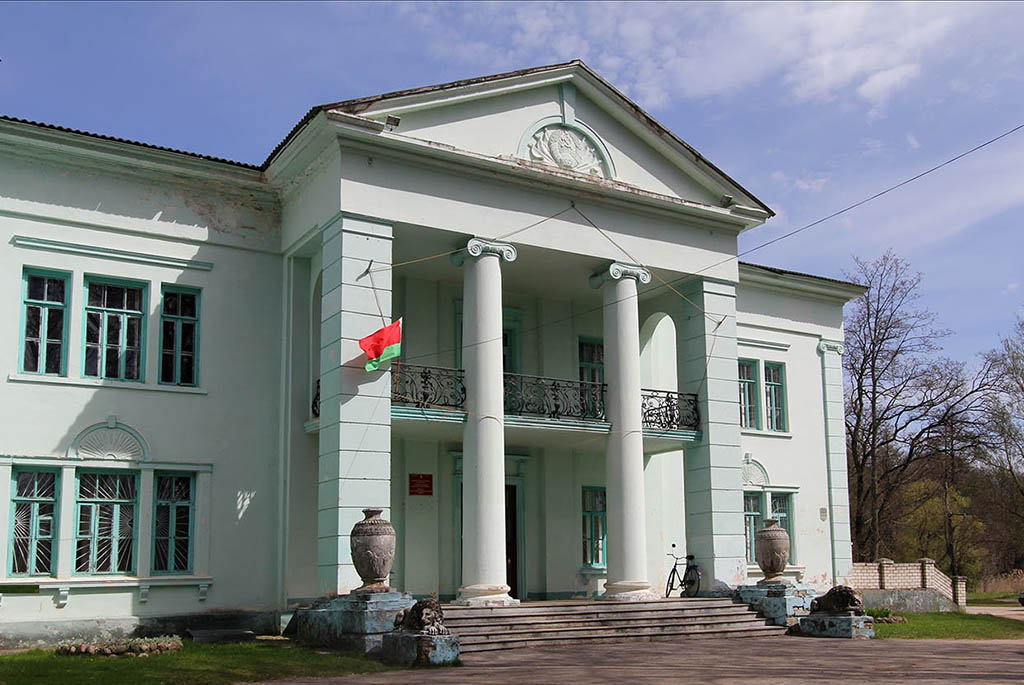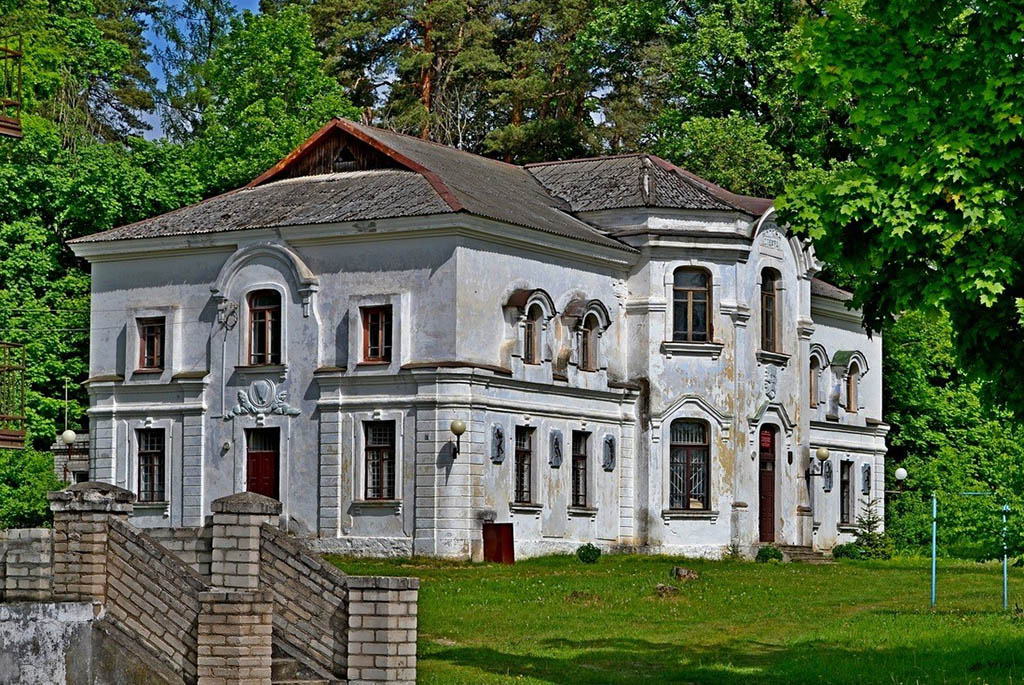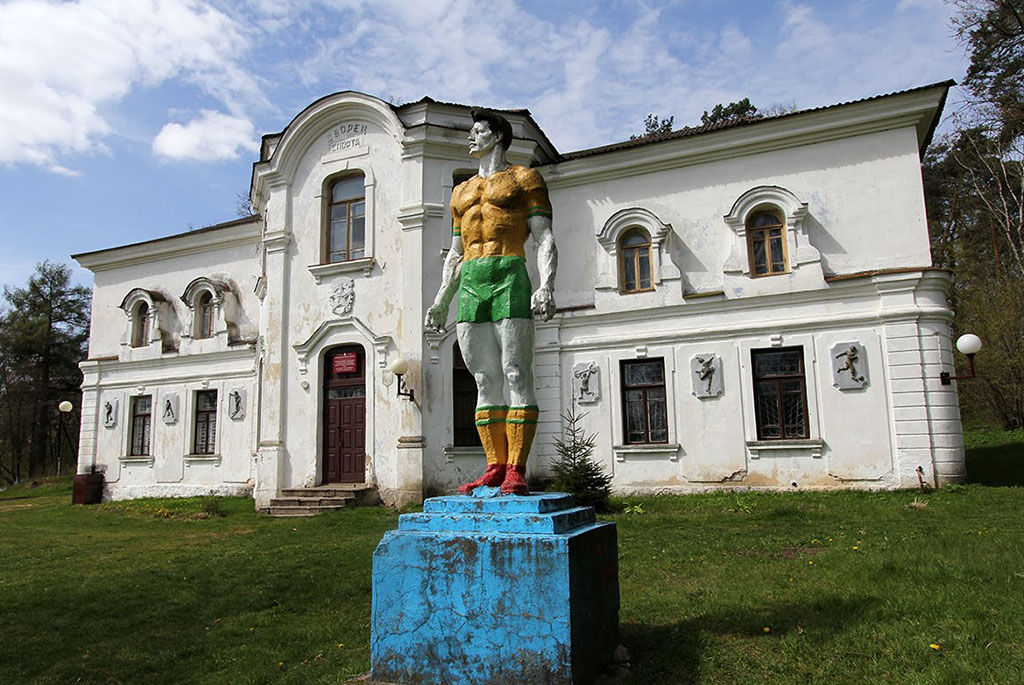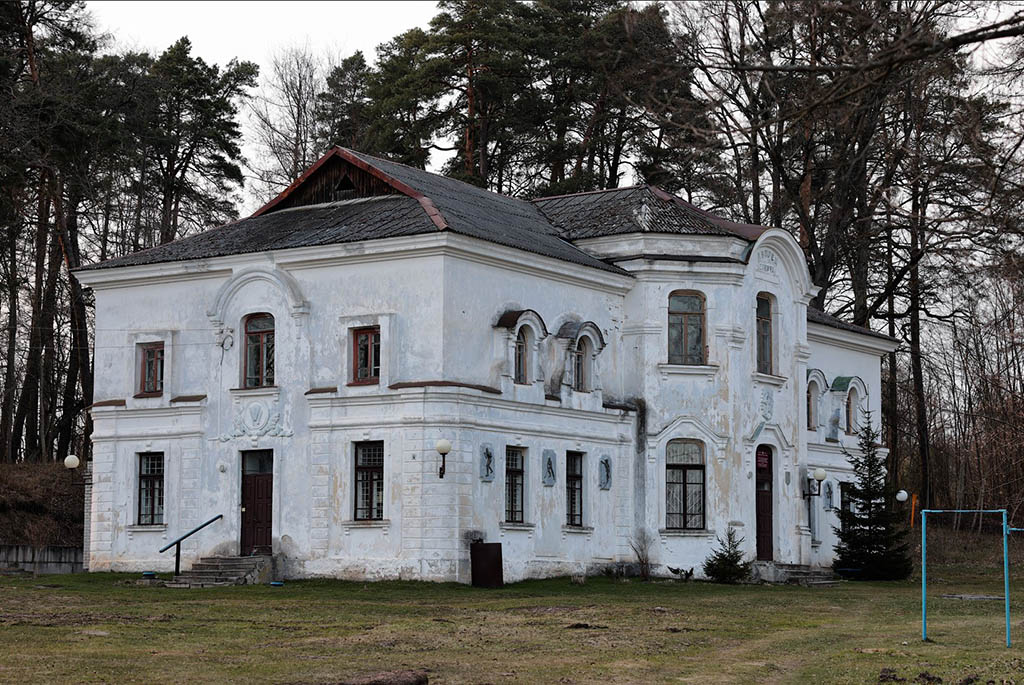The name of the estate is associated with a tragic story. It is named after one of Puslovski's sons – Albert, who disappeared under mysterious circumstances. According to one version, he drowned in a lake during a walk; according to another, he vanished without a trace along with family jewels, hiding during an uprising. There is even a fantastical version that Albert Puslovski fell into a time loop, as no hint of his trail was found during the search. Since the heartbroken father always treated his son with special love, Voitekh decided to name the estate after him.

The estate complex included three main objects:
- winter palace
- festival palace
- summer palace
In addition to the main houses, the territory housed living quarters for servants, stables, a smokehouse, a mill, a butter factory, and other outbuildings. A park was laid out near the estate.
The Puslovski family owned several enterprises and was quite wealthy, so the estate corresponded to the high status of the owners. Balls and noble receptions were held at the estate, and theatrical performances were arranged. Inside, there were a rich library, a collection of Italian paintings, and family jewels.

In the late 19th century, due to political reasons, the Puslovski family fell out of favor with the government of the Russian Empire. The estate was confiscated and renamed Alexandrinsk, in honor of the Russian emperor. In the 1920s, the former name was restored, but the Puslovski family left the country forever in the early 1930s, taking with them all family valuables.
The Albertin Estate in Our Time
Currently, the territory of the historical estate complex belongs to the local paper and cardboard factory "Albertin." The entrance to the complex is through a gatehouse. The winter palace building has been preserved almost unchanged. It now houses a sports club owned by the factory. On its facade, one can notice sports-themed decor added during the Soviet era. Opposite the building is a statue of an athlete. The main building of the complex, the festival palace, has also been well-preserved. It features typical 19th-century architecture: majestic columns, a large porch decorated with antique vases, decorative elements, ornate balcony railings, and lion sculptures at the entrance. At present, the building is used as a cultural center, library, and youth center.

The summer palace has not survived, but a hotel was built on its foundation in the early 2000s, which blends organically into the estate complex. The construction was restored based on the drawings of the original summer palace.
Also located on the estate grounds is a brick stable building, constructed in the early 20th century. Despite its utilitarian purpose, its exterior resembles an estate or palace. Its appearance is enhanced by ornamental red brickwork, windows of various shapes, and mosaic glass. Near the estate, there is a park and a picturesque lake, which also bears the name Albertin.

The Puslovski estate in Slonim will interest not only lovers of manor and park architecture, but also all tourists who are interested in the history of our country. Slonim is one of the oldest cities in Belarus, preserving many architectural landmarks. In addition to the Albertin estate, you can see a 17th-century synagogue and a Bernardine church, an 18th-century Church of St. Andrew, 18th-19th century urban buildings, and other interesting historical sites. From Minsk to Slonim there are trains and long-distance buses.